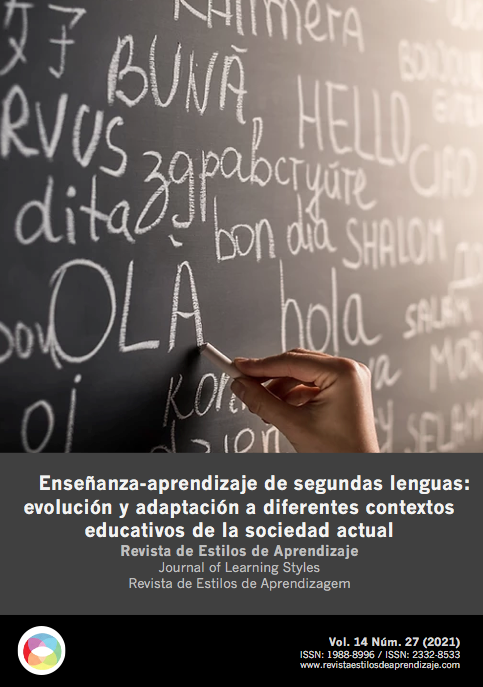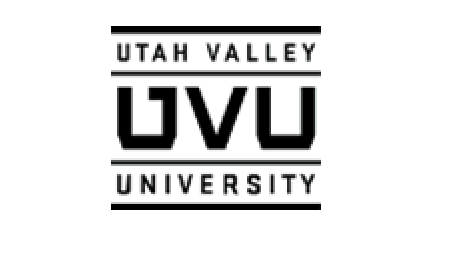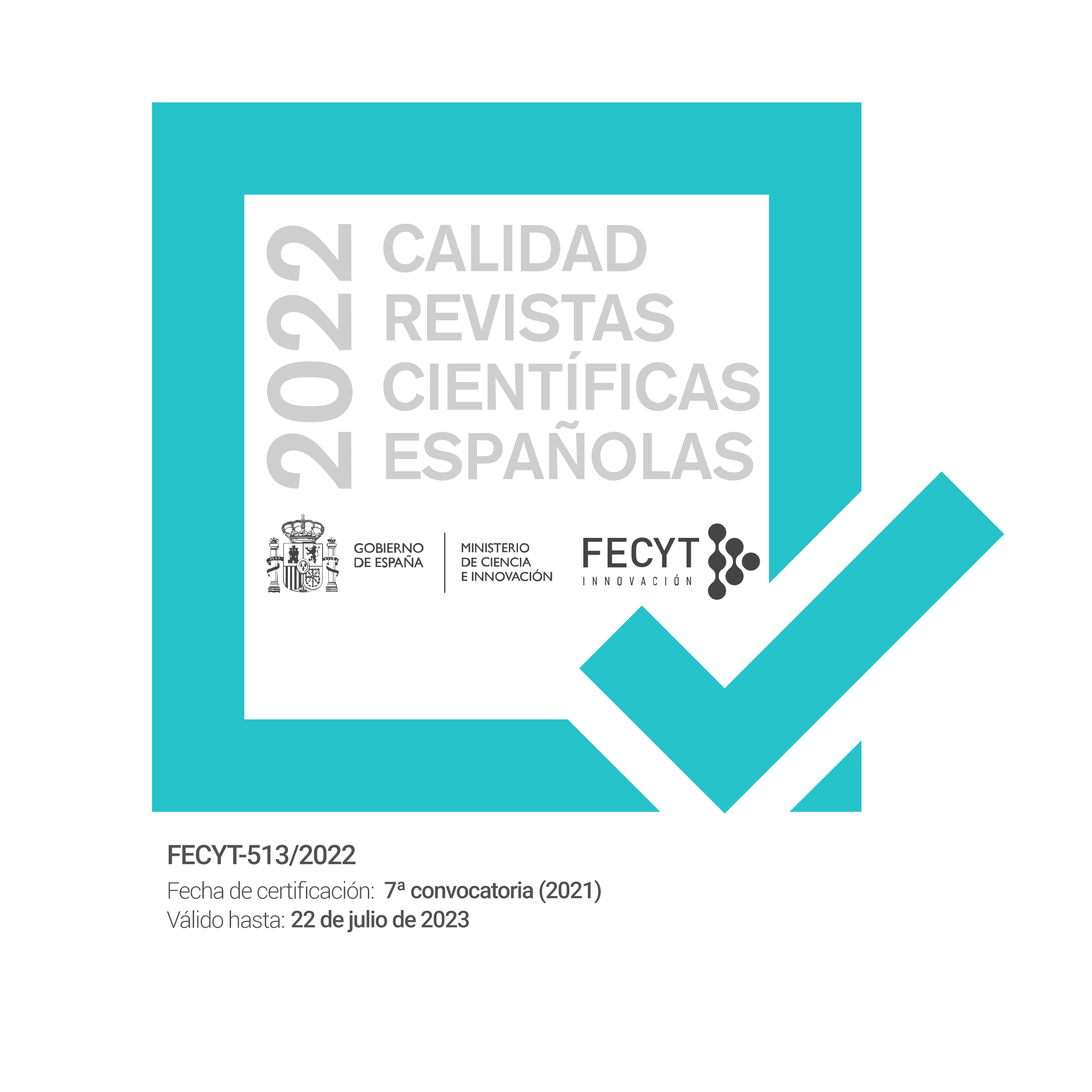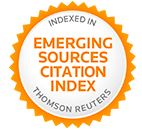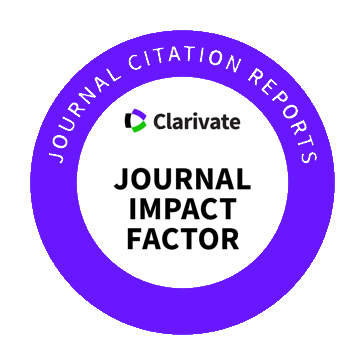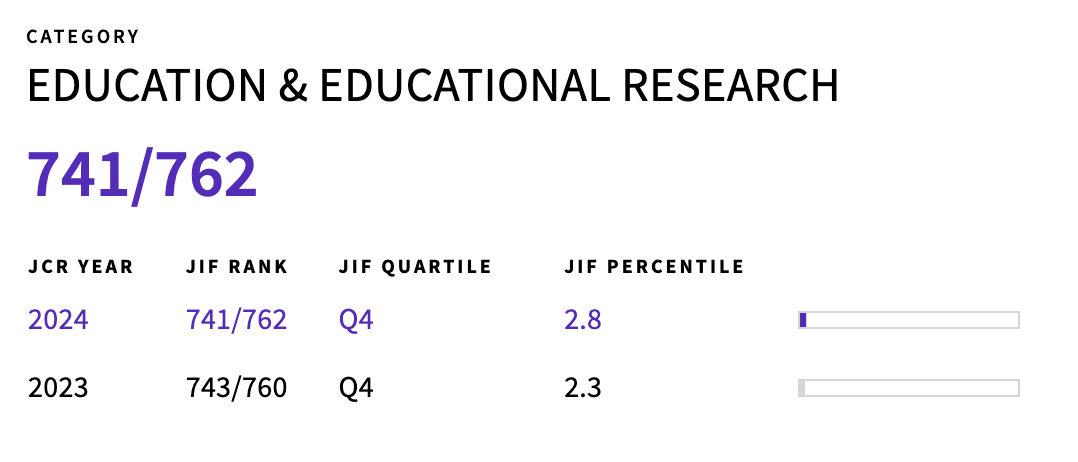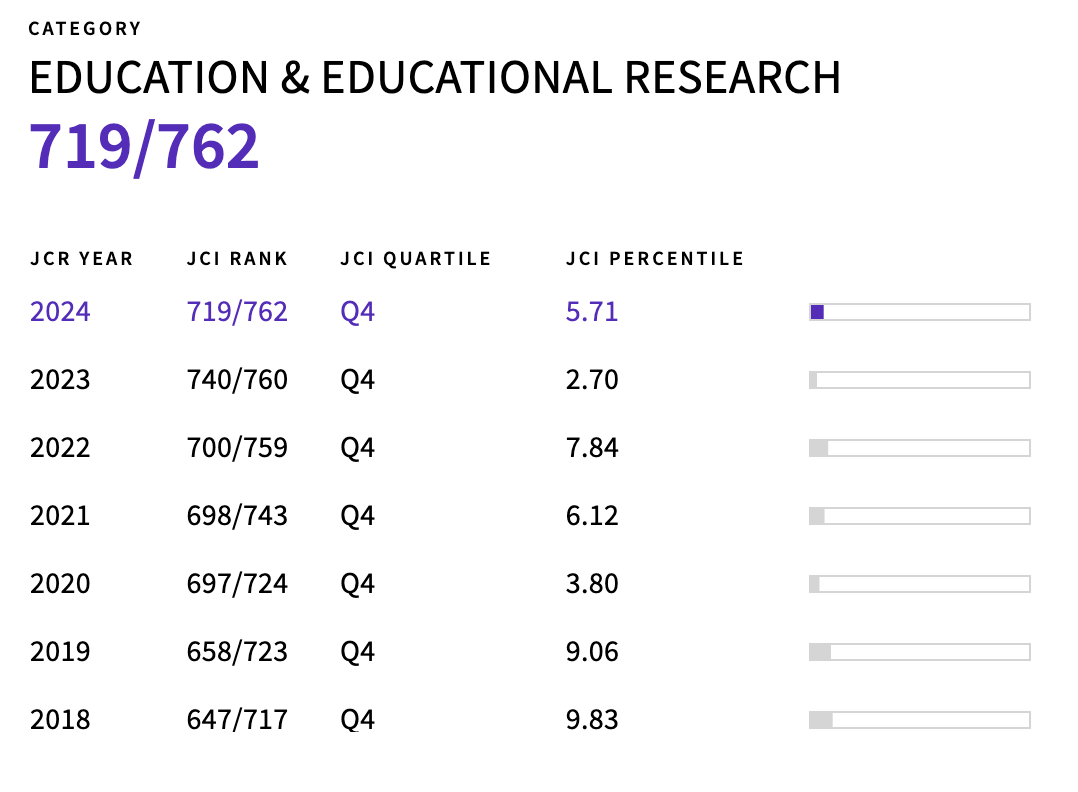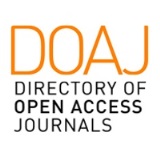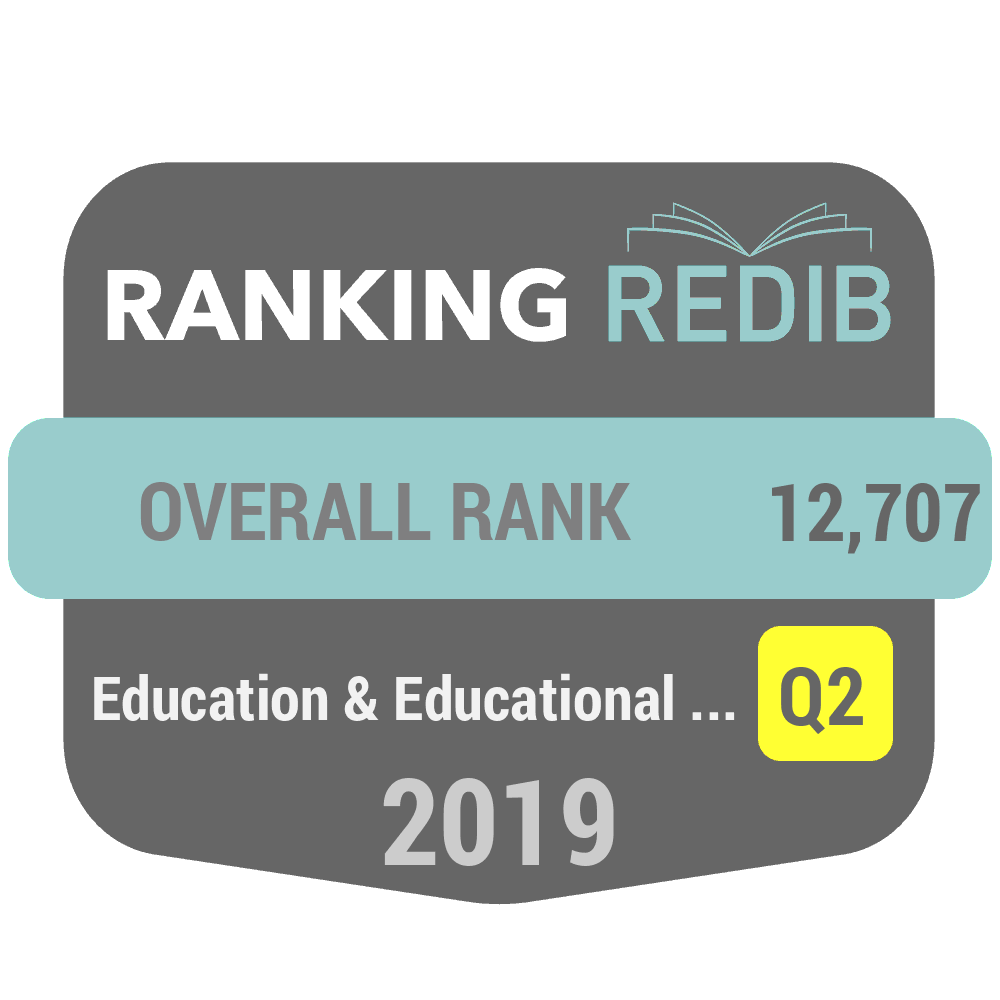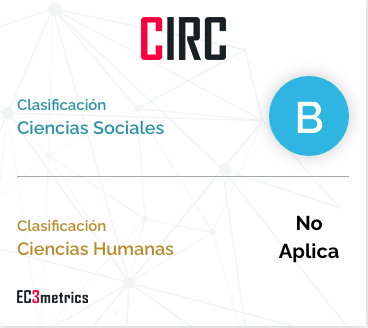Teachers’ Efficiency of CLIL implementation to Reach Bilingualism in Primary Education
DOI:
https://doi.org/10.55777/rea.v14i27.2822Keywords:
Bilingüismo, Educación Primaria, Maestros, Comunidad de MadridAbstract
The pivotal objective of this research is to investigate the degree of knowledge and the teachers’ capacity to implement CLIL methodology, as a tool to reach bilingualism in Primary Education in Madrid Community.To this aim, questionnaires were administered to 75 Primary school teachers of Natural and/or Social Sciences to perform a quatitative correlational analysis to determine the degree of CLIL implementation in relation to the teachers’ being bilingual. After basing the topic on previous investigations delving into the phenomenon of bilingualism and the theory of CLIL, this article presents the research design and data analysis; and outlines its main findings in relation to teachers’ self-identification with being bilingual and the implementation of the four principles of CLIL in the classroom, and the use of didactic resources. The findings of this research point to the necessity of teacher-training programmes in CLIL methodology to improve the teachers’ understanding and implementation of this method to ensure better students’ academic performance in bilingual programmes.
Downloads
References
Alarcon, L. J. (1998). El fenómeno del bilingüismo y sus implicaciones en el desarrollo cognitivo del individuo. Colección Pedagógica Universitaria. 29, 139-165.
Alcaraz-Mármol, G. (2018). Trained and Non-Trained Language Teachers on CLIL Methodology: Teachers’ Facts and Opinions about CLIL Approach in the Primary Education Conetxt in Spain. LACLIL, 11, (1), 39-64. http://orcid.org/0000-0001-7703-3829
Appel, R. and Muysken, P. (1987). Language Contact and Bilingualism. London: Edward Arnold.
Ayala Tello, E. (2017). Materiales AICLE: Invirtiendo en una enseñanza de calidad. In García Manzanares, N. & Vinuesa Benítez, V. Actas del IV Congreso Internacional de Enseñanza Bilingüe en Centros Educativos (CIEB).
Baetens Beardsmore, H. (1982). Bilingualism: Basic Principles. Clevedon: Multilingual Matters.
Bee Chin, Ng & Wigglesworth, G. (2007). Bilingualism: an Advanced Resource Book. Oxon: Routledge Applied Linguistics. https://doi.org/10.4324/9780203410264
Barrios, E., Milla Lara, M.D. (2020). CLIL methodology, materials and resources, and assessment in a monolingual context: an analysis of stakeholders’ perception in Andalusia. The Language Learning Journal, 48 (1), 60-80. https://doi.org/10.1080/09571736.2018.1544269
Bialystok, E. (2005). Consequences of bilingualism for cognitive development. In Kroll, J.; De Groot, A. (eds.). Handbook of Bilingualism: Psycholinguistic Approaches. Oxford: Oxford University Press, 417-431.
Bloomfield, L. (1933). Language. New York: Holt.
Bobadilla Pérez, M. y Díaz Caneiro, E. (2017). CLIL and AMI implementation in a bilingual framework: the case of Galicia. In García Manzanares, N. & Vinuesa Benítez, V. Actas del IV Congreso Internacional de Enseñanza Bilingüe en Centros Educativos (CIEB).
Bolarn Martínez, M.J.; Porto Curras, M.; García-Villalba Navaridas, R.M. (2012). Los programas bilingües en la region de Murcia: situación y valoraciones de profesores de disciplinas no lingüísticas. Educatio Siglo XXI, 30 (2), 255-288.
Callealta, L., Donoso, M., Camuñas Sanchez-Paulete, N. (2020). El docente en la actualidad: competencias y formación inicial como ejes prioritarios en su construcción identitaria. Revista Estilos de Aprendizaje, 13 (25), 84-98.
Campillo-Ferrer, J., Miralles-Martinez, P., Sanchez-Ibanez, R. (2020). CLIL teachers’ views on cognitive development in primary education. Palgrave Communications, 6 (97). https://doi.org/10.1057/s41599-020-0480-x
Carranza-Marchena, P. (2019). Teaching Strategies Based on Learning Styles: Promoting Communicative Competence in Speaking Skills. Innovaciones Educativas, XXI (31), 36-48. https://doi.org/10.22458/ie.v21i31.2692
Christopherson, P. (1948). Bilingualism: An Inaugural Lecture Delivered on Foundation Day. Ibadan: The University of Ibadan. El docente en la actualidad: competencias y formación inicial como ejes prioritarios en su construcción identitaria. Estilos de Aprendizaje, 13 (25), 84-98.
Consejeria de Educacion, Direccion General de Ordenacion Academica, Comunidad de Madrid (2012). https://bit.ly/3qQ49XJ.
Cook, V. (1997). The consequences of bilingualism for cognitive processing. In De Groot, A.; De Kroll, J. (eds.). Tutorials in Bilingualism. Mahwah, NJ: Erlbaum, 279-299.
Coyle, D., Hood, P., & Marsh, D. (2010). CLIL: Content and Language Integrated Learning. Edinburgh, United Kingdom: Cambridge University Press.
Cruz, I. (2008). English and Spanish in Contrast. Madrid: Servicio Publicaciones UAH.
Cummins, J. (1984). Bilingualism and Special Education: Issues in Assessment and Pedagogy. Clevedon, England: Multilingual Matters.
Dale, L, van der Es, W., Tanner, R. (2011). CLIL Skills. Leiden: European Platform- internationalising education.
Daniel, W. W., & Villamizar, J. (1981). Estadística con aplicaciones a las ciencias sociales y a la educación. Bogotá: McGraw-Hill.
Diebold, A.R. (1961). Incipient bilingualism. Language XXXVII, 97-112. https://doi.org/10.2307/411253
Fishman, J. (1971). National Languages and languages in wider communication in the developing nations, in W.H. Whiteley (ed.) Language Use and Social Change. London: Oxford University Press, 27-56.
Hamers, J.F. & Blanc, M.H.A. (2000). Bilinguality and Bilingualism. Cambridge: Cambridge University Press. https://doi.org/10.1017/CBO9780511605796
Herranz Blokker, R. (2017). What makes an effective bilingual programme: Talking from experience. In García Manzanares, N. & Vinuesa Benítez, V. Actas del IV Congreso Internacional de Enseñanza Bilingüe en Centros Educativos (CIEB).
Herrero Ramila, C. (2015) El programa de colegios bilingües de la Comunidad de Madrid: un análisis del proceso de cambio ocurrido a través de sus profesores. Tesis doctoral. Universidad Autónoma de Madrid.
Hoffmann, C. (1991). An Introduction to Bilingualism. London: Longman Linguistics Library.
Jäppinen, A.-K. (2005). Thinking and content learning of mathematics and science as cognitional development in content and language integrated learning (CLIL): teaching through a foreign language in Finland. Language and Education, 19 (2), 148-169. https://doi.org/10.1080/09500780508668671
Juárez-Díaz, C. y Florez-González, N. (2018). Multifaced activities to promote the learning of the fereing language base don learning styles. In Crescendo, 9 (4), 703-719.
Laarsen-Freeman, D. (2000). Techniques and Principles of Language Teaching. Oxford: Oxford University Press.
Lambert, W.E. (1974). Language, Psychology and Culture. Standford: Standford University Press.
Lasagabaster, David, and Ruiz de Zarabe, Yolanda, eds. (2010). CLIL in Spain: Implementaction, Results, and Teacher Training. Newcastle upon Tyne: Cambridge Scolar Publishing.
Lova, M.; Bolarín, M.J. & Porto, M. (2013). Programas bilingües en Educación Primaria. Valoraciones del docente. Porta Linguatium 20, 253-268.
Madrid, Comunidad Bilingüe/Madrid (2012). A Bilingual Community. Madrid: Publicaciones Consejería de Educación y Empleo.
MacFarland, T. W., Yates, J. M., MacFarland, T. W., & Yates, J. M. (2016). Mann–Whitney U Test. In Introduction to Nonparametric Statistics for the Biological Sciences Using R. New York: Springer International Publishing, 103–132. https://doi.org/10.1007/978-3-319-30634-6_4
Macnamara, J. (1967). Blingualism in the modern world. Journal of Social Issues, XXIII (2), 1-7. https://doi.org/10.1111/j.1540-4560.1967.tb00571.x
Mallorquín Rodríguez, M.S. (2017). La flexibilidad de un docente CLIL. En García Manzanares, N. & Vinuesa Benítez, V. Actas del IV Congreso Internacional de Enseñanza Bilingüe en Centros Educativos (CIEB).
Marsh, D., Maljers, A., & Hartiala, A.-K. (2001). Profiling European CLIL Classrooms: Languages Open Doors. https://bit.ly/3ePLbhL.
McBride, S. (2017). Writing-to-learn content in a CLIL Spanish compulsory secondary education environment. An exploratory study. In García Manzanares, N. & Vinuesa Benítez, V. Actas del IV Congreso Internacional de Enseñanza Bilingüe en Centros Educativos (CIEB).
Merriam-Webster. (n.d.). Bilingualism. In Merriam-Webster.com dictionary. https://bit.ly/3cyzedy.
Mehisto, P., Marsh, D., & Frigols, M. J. (2008). Uncovering CLIL. Content and Language Integrated Learning in Bilingual and Multilingual Education. Oxford: Macmillan Publishers.
Mohanty, A. K., & Central Institute of Indian Languages. (1994). Bilingualism in a multilingual society: Psycho-social and pedagogical implications. Mysore: Central Institute of Indian Languages.
Nikula, T. (2015). Hands-on tasks in CLIL science classrooms as sites for subject-specific language use and learning. System, 54, 14-27. https://doi.org/10.1016/j.system.2015.04.003
Okurinmeta, U. (2013). Bilingualism and linguistic in Nigeria: Examples from works of Achebe and Emecheta. https://doi.org/10.5539/ijel.v3n4p117
Otzen, T., Manterola, C. (2017). Técnicas de Muestreo sobre Población a estudio. International Journal of Morphology, 35 (1), 227-232. https://doi.org/10.4067/S0717-95022017000100037
Ostereicher, J.P. (1974). The early teaching of modern language, education and culture. Review of the Council for Cultural Cooperation of the Coincil of Europe, 24, 9-16.
Pazan Torres, J.C., Pullas Tapia, S., Nuñez Hernandez, C.E., Amora-Sanchez, R. (2017). Estilo de aprendizaje visual: una estrategia educativa para el desarrollo de la memoria a largo plazo. Revista de Estilos de Aprendizaje, 10 (20), 240-261.
Romaine, S. (2004). Bilingualism. Oxford: Blackwell Publishing.
San Román López, M. (2017). Maestro CLIL: Un perfil docente adaptado a las necesidades específicas de los alumnus de primaria. In García Manzanares, N. & Vinuesa Benítez, V. Actas del IV Congreso Internacional de Enseñanza Bilingüe en Centros Educativos (CIEB).
Sanchez-Casas, R. (1999). Una aproximaxión psicolingüistica al estudio del léxico del hablante bilingüe. In Vega, M. and Cuetas F. (eds.), Psicolinguistica del epañol, Madrid, Trotta.
Skutnabb-Kangas, T. (1984). Bilingualism or Not. Clevedon: Multilingual Matters.
Tibaldi, E.V. (2012). The scientific Laboratory as Learning Skill in CLIL. Synergies Italie, 8, 175-186.
Van de Craen, P., Ceuleers, E., Mondt, K. (2007). Cognitive development and bilingualism in primary schools: teaching maths in a CLIL environment. In Marsh, D., Wolff, D. (eds.). Diverse Contexts–Converging Goals. CLIL in Europe. Frankfurt am Main: Peter Lang,
Weinreich, U. (1968). Languages in Contact: Findings and Problems. The Hague, Paris: Mouton.
Wölk, W. (1984). Komplementierung und Fusion. Prozesse natürlicher Zwei-sprachigkeit, in E. Oskaar (ed.) Spracherwerb-Sprachckontakt-Sprachkonflikt. Berlin: De Gruyter.
Downloads
Published
How to Cite
Issue
Section
License
By submitting the original, the author(s) declare that they are aware of and accept, in full, the privacy policy as well as the copyright of the Learning Styles Magazine.
The Learning Styles Magazine offers free and open access to its content, completely free of charge, in order to bring scientific research to its readers and society in general. All digital contents are free and open access and are published under a Creative Commons license:

Rights are granted under the Creative Commons Reconocimiento-NoComercial-SinObraDerivada 4.0 Internacional (CC-BY-NC-ND 4.0)
The Learning Styles Magazine is an open access journal. Publication of articles or reviews in the Journal does not entitle you to any remuneration. For authors as well as readers, the journal is free Creative Commons Reconocimiento-NoComercial-SinObraDerivada 4.0 Internacional (CC-BY-NC-ND 4.0).
With this licence, the reproduction and dissemination of the contents of the magazine for educational, social and knowledge transmission purposes is permitted, without any profit motive in mind, provided that the source and authorship are not modified. The licence granted to Learning Styles Magazine allows the copying and distribution of the magazine's contents, as long as the authorship of the work is recognised, correctly specifying the author and the publishing entity. The work may not be used for commercial purposes, nor may it be altered, transformed or generated from this work.
The publication of articles or reviews in the Journal does not give the right to any remuneration.
The Learning Styles Journal invites the author/authors to increase the visibility and scope of their articles published by re-disseminating them in:
- Web spaces and personal networks, as well as in scientific meetings and forums
- Open institutional archives in Universities, educational repositories and Research Centres.
- Academic and scientific networks (Researchgate, Academia.edu, Plubons, etc.)
All these spaces and publications must include all the bibliographic data of the publication.

